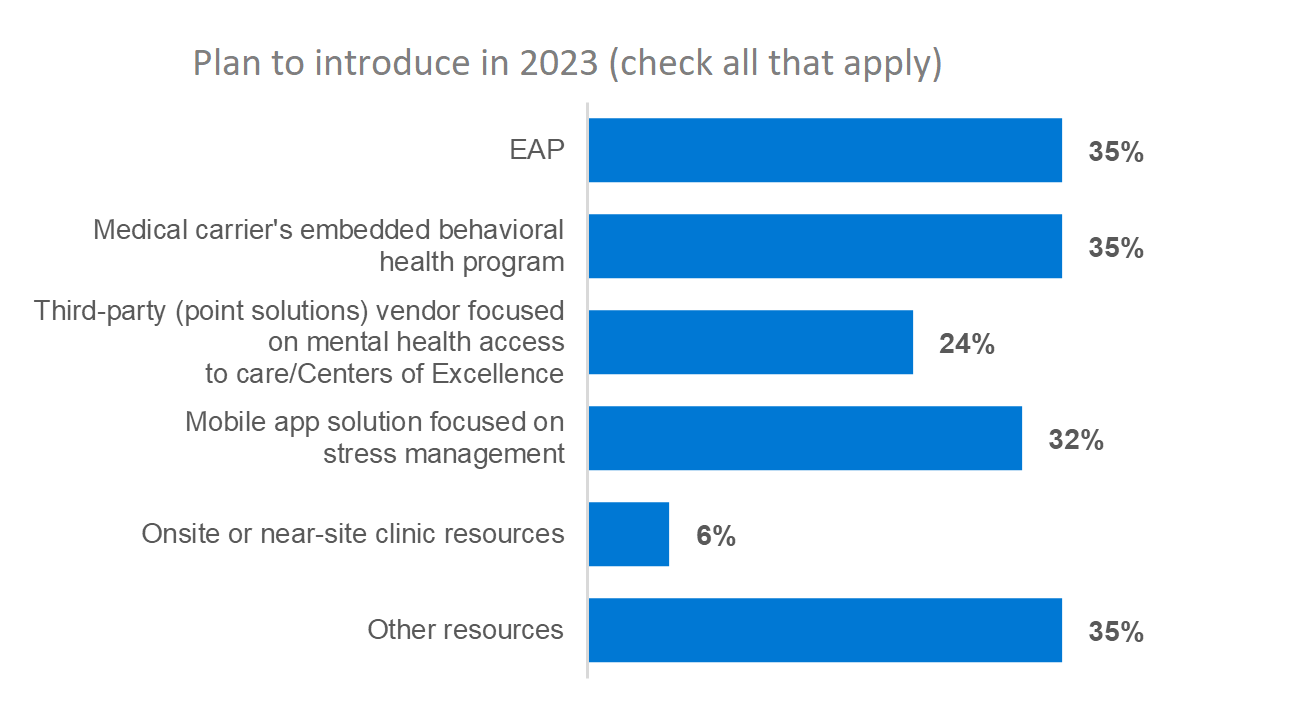Survey summary
The topic of this Pulse Survey drew a significant response from employers representing a broad range of industries and more than 1.6 million lives. Overall, the results suggest that employers witnessed both increased use of the available mental health resources offered through their benefits plan (66% indicated yes), and a significant spike in claim costs (62% of respondents) in a short period of two-plus years since the start of the pandemic.
Although these results suggest higher demand for mental health resources, it also is indicative that employees are more actively seeking help and treatment. Early engagement in addressing mental health concerns often results in less severe comorbidity and better patient outcomes. One frustration for employers is a lack of more targeted and actionable data needed to better understand the cost and impact of mental health within employee populations. Sixty-five percent of respondents stated that they receive either no data or insufficient data regarding mental health services engagement and utilization. The survey results suggest that employers are well aware that more needs to be done to improve access and continually reduce stigma—and that employers are taking action.
EAP services
Employee Assistance Programs (EAPs) have traditionally been at the core of mental health benefits, with 93% of respondents already offering them as part of their mental health-related benefits packages. However, EAPs have historically been underutilized—mainly due to limited perceived value, a lack of understanding of the service, or some stigma or reluctance attached to accessing EAP services.
Traditionally, an EAP acts as an early engagement resource to address less severe emotional health issues and provides a gatekeeper process to more comprehensive and/or clinical treatment options. As such, the increase in EAP utilization found in this survey suggests that EAPs are now part of a much broader arsenal of mental health resources, and that the benefit itself is being broadened to provide greater support as an early engagement tool.
Historically, visits have often been limited to two to three virtual or phone interactions, but this appears to be changing. Nearly 65% of respondents with EAPs now include five or more visits as part of the program and 17% offer unlimited visits under their EAP benefits.
Use of point solutions (third-party) vendors
As an indication that employers are potentially rethinking or expanding the breadth of resources available through their benefits plans, the engagement of point solutions vendors in the behavior health space is continuing its explosive growth. The results of this survey suggest that these vendors have a growing permanence in addressing access to care as well as providing more immediate support for those in need. The survey respondents indicated that their current mental health-related benefits leaned heavily on their medical carriers’ packaged solutions.


According to the survey, 78% of respondents indicate that they rely heavily on their medical carriers to provide mental health resources to their memberships. However, when asked what new resources will be introduced in 2023, more than half of respondents (56%) indicated incorporating one or more third-party solutions, with a focus on expanding both access to care and emotional well-being and stress management through mobile app-style resources.
Driving engagement
The value of a benefits resource is realized when employees take advantage of the services. The survey asked respondents how they were driving stronger engagement in their mental health benefits. Perhaps not surprisingly, targeted communication campaigns are high on everyone’s list of strategies, with most respondents (85.5%) listing it as part of their overall engagement approach. While this is the sole engagement strategy for some, other engagement tactics are pretty evenly identified as being part of the overall approach to driving mental health resource awareness and engagement.
Perhaps most gratifying to see is the strength of leadership’s role (46%) in driving awareness, acceptance, and engagement in the organization’s mental health benefits resources.
Caveats
This survey summary has been prepared for information only. Milliman does not intend to benefit or create a legal duty to any recipient of this summary.

